In Kawangare, one of the many “informal settlements” – or slums – in Kenya’s capital Nairobi, Jen is often worried about the weather. The droughts and flood events that hit her neighbourhood are becoming more regular and intense with each year that passes, posing a real threat to people’s lives.
“Life has always been hard in the informal settlements: Food and water is scarce, and there are so many people,” says the 59-year old, who has lived in Kawangare since 1989. “But now that the climate change is here, things really are becoming much harder.”
Nairobi’s informal settlements are illegal neighborhoods that fall outside of the jurisdiction of city authorities. They are scattered across the sprawling Nairobi urban area, with millions squeezing in: In 2019, for example, some 200 informal settlements occupied six per cent of Nairobi’s land, but held some 60 per cent of the city’s population.
Globally, some 1.1 billion people are believed to live in informal settlements, representing around 15 per cent of the world’s urban population.
Jen is luckier than some. She and her husband Joseph now share a room in a triple-storey block, instead of living in one of the corrugated iron shacks populated by many. But visiting Jen on a Sunday, or laundry day, gives a sense of just how many people are crammed into the space, with the vast number of colourful garments hanging from every inch of wall and windowsill, as well as from the washing lines that zig-zags across her narrow courtyard.
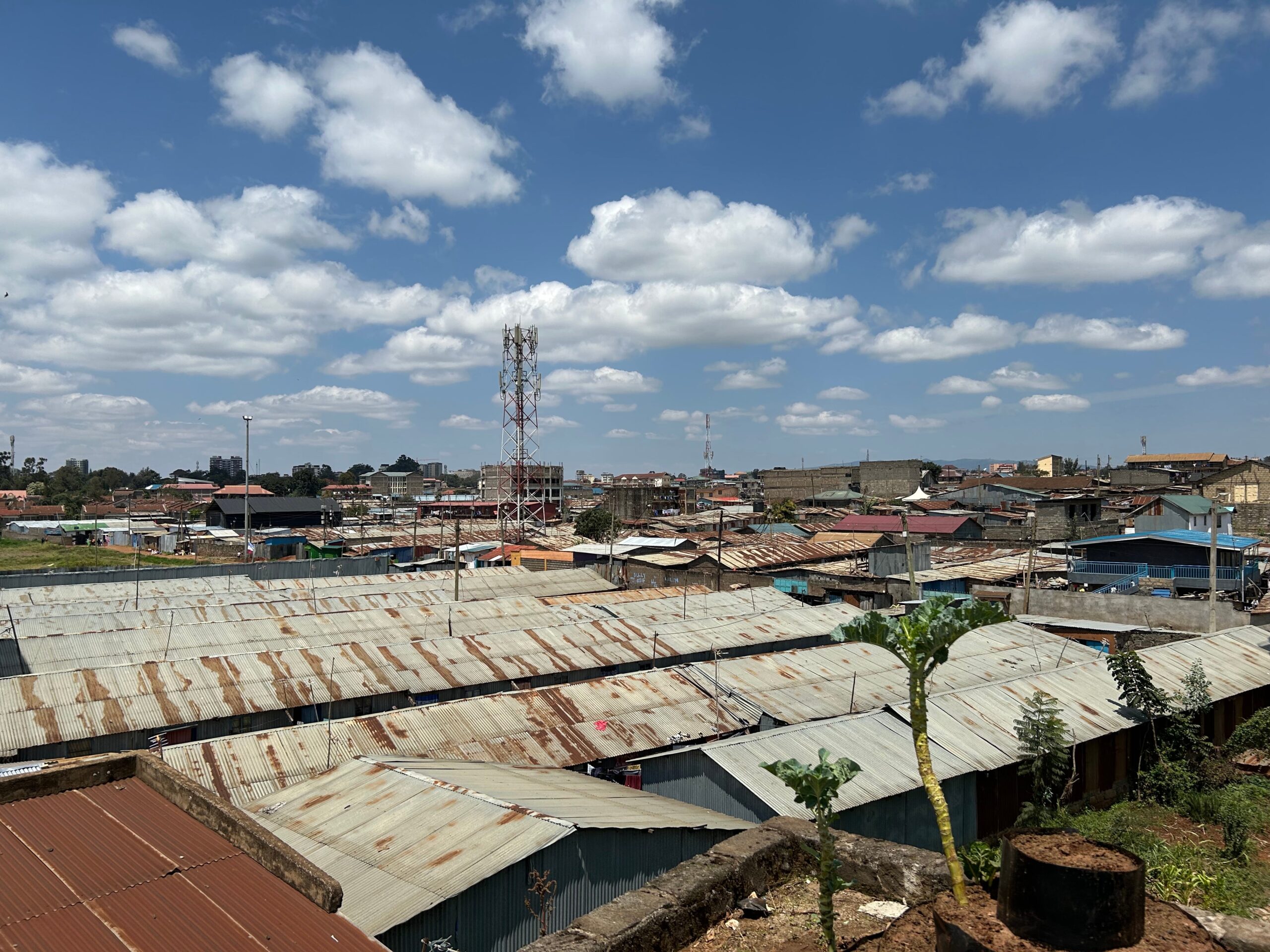
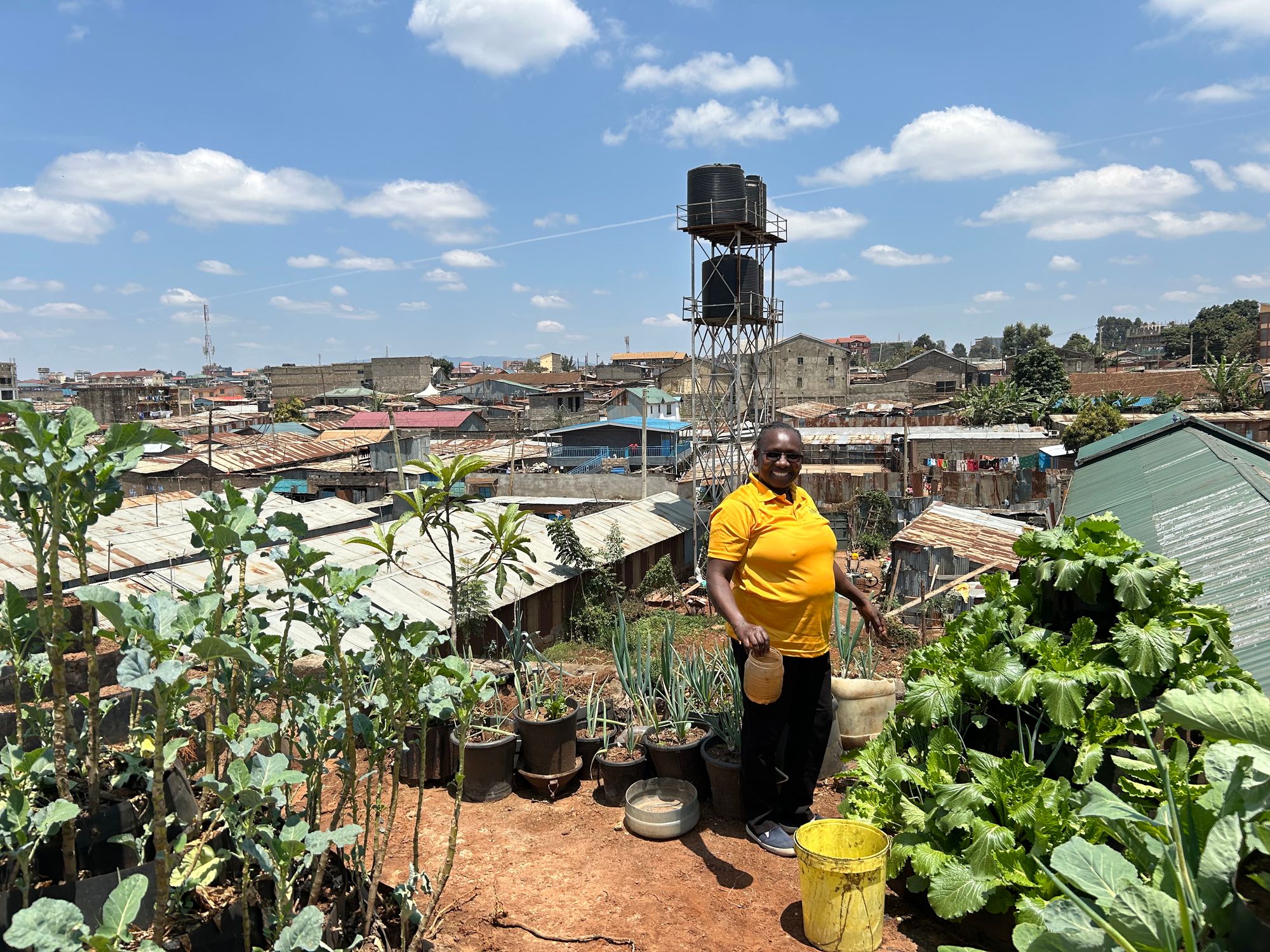
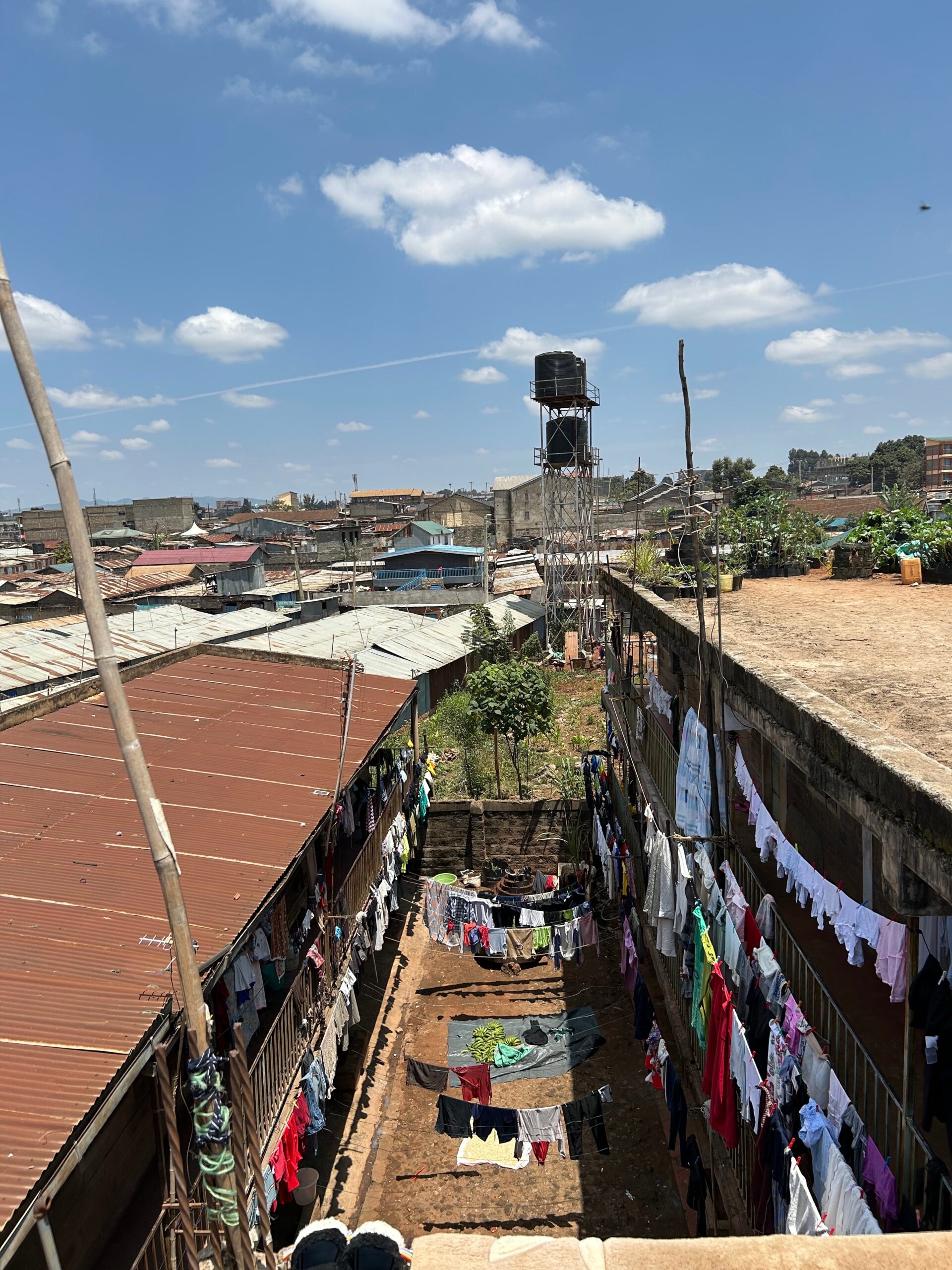
When rainy seasons fail in Kenya, the major impact felt by slum-dwellers is on the price of food, says Jen. “When there is drought, less food comes from the rural areas, which means that little food reaches us here,” she explains.
Extreme weather has contributed to food inflation that has been rampant in recent years. Jen describes how a 2kg tin of kasuku fat – which is the staple vegetable oil in Kenya – has increased from 98 shillings (56p) seven years ago to almost 800 shillings (£4.50) today, with most of that increase taking place in the past two years.
The climate-driven phenomenon shows no sign of abating, with the national inflation rate of 4.1 per cent recorded in August driven by a 8.3 per cent rise in the cost of food, according to the Kenya National Bureau of Statistics. Below-normal rainfall expected over the Horn of Africa in the final part of the year also risks further inflation, given the impact this could have on livestock and crop production, say analysts.
‘Every time it rains, I’m afraid’
The other key climate-driven weather event hitting the slums is flooding, which in recent years has become a major worry for residents. The floods of March to May 2024, for example, led to waterways bursting their banks across the wider Nairobi county, leading to multiple deaths and thousands of people being displaced.
Across the narrow lanes of the slums, floodwaters dissolved dirt roads and mixed with sewage and discarded rubbish to form a toxic quagmire that flowed into people’s houses. Consolata, a 50-year-old widow who lives down the road from Jen in a corrugated iron hut, was directly impacted, with floods forcing her and her family – including two children and four grandchildren – from their home for a month.
“There was water in the yard and all over the house, and we could not work, we had to leave,” she says. “Every time it rains now I am afraid that the floods will come back.”
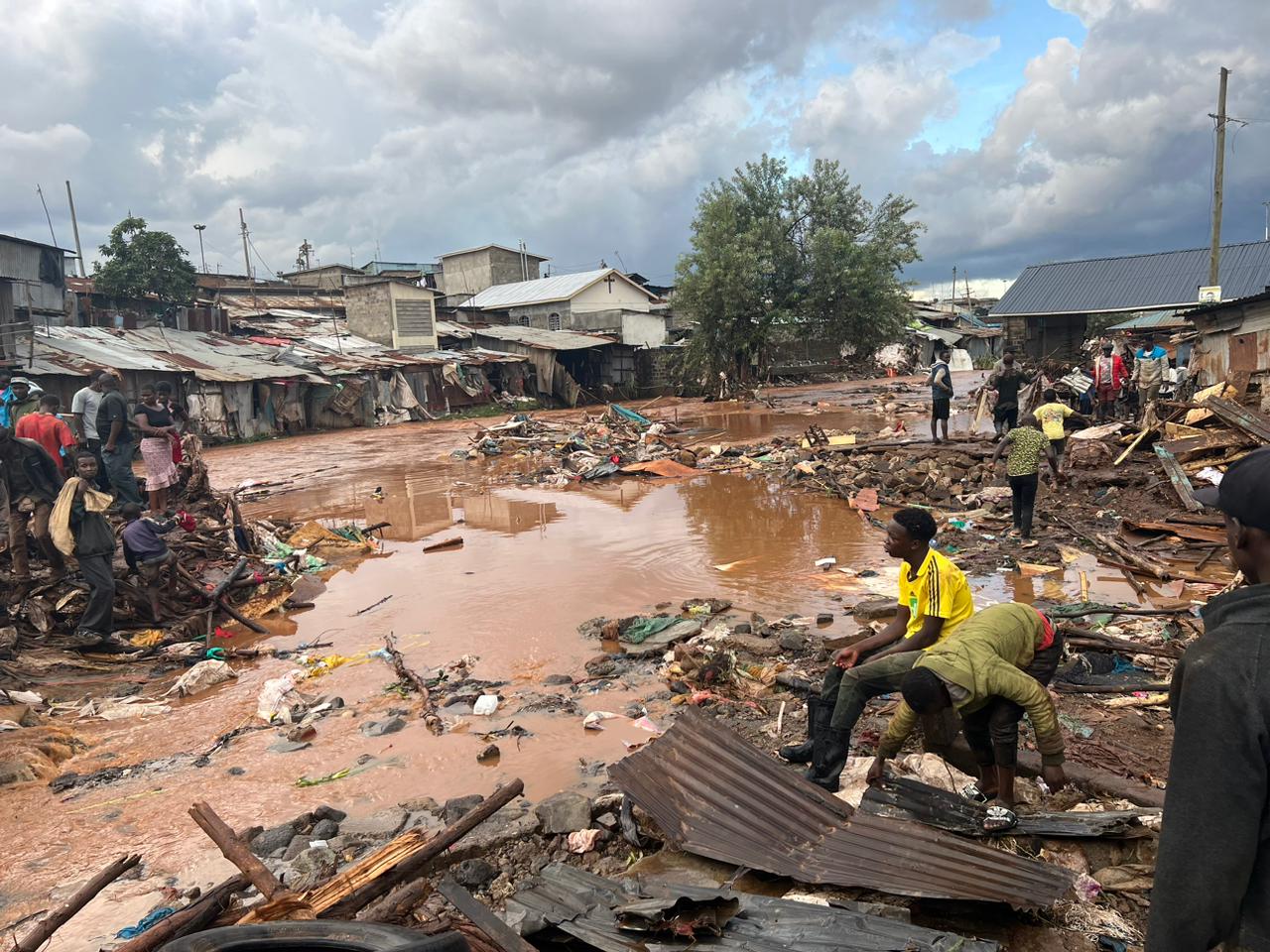
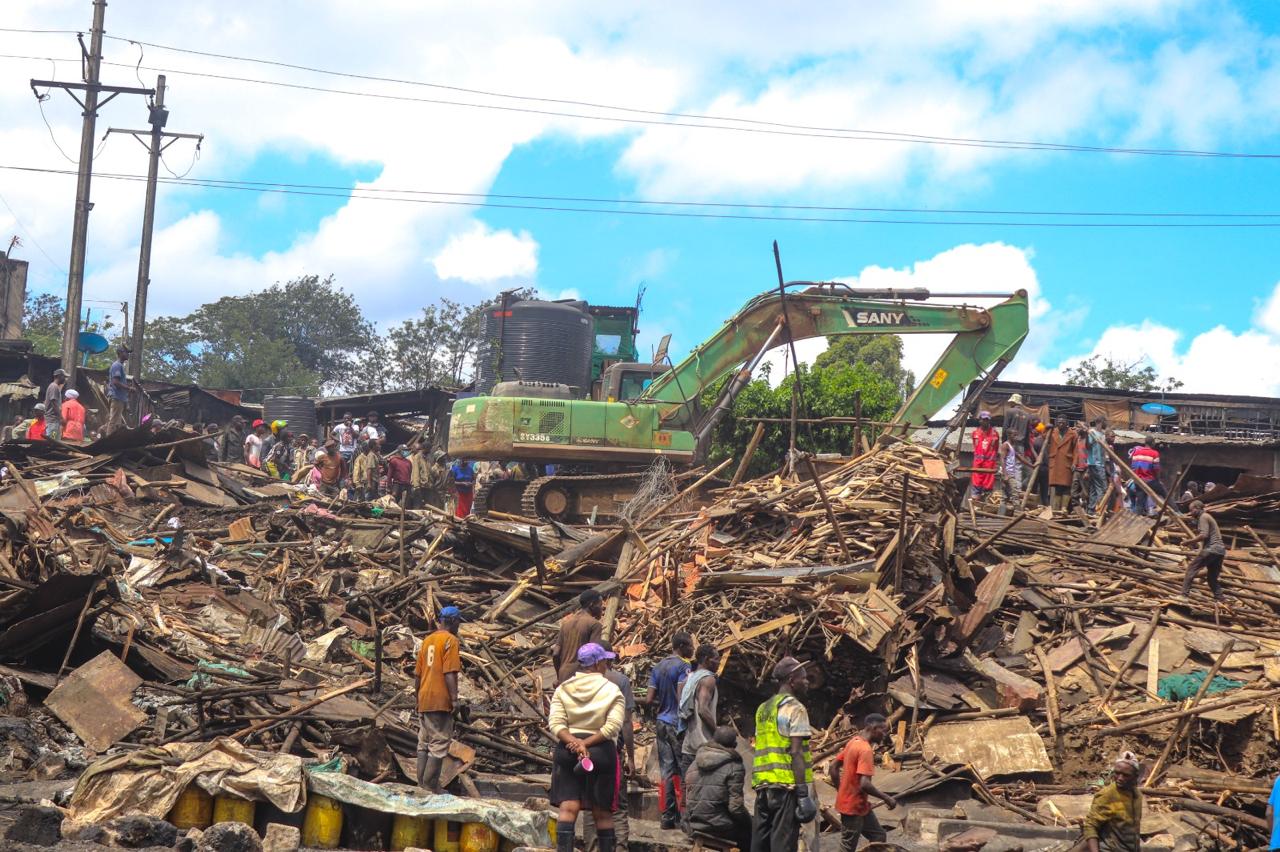
Poor building practices in the slums mean that even in the years when rainfall is less extreme, certain households are at risk. The building opposite Jen’s building is built on a strip of land that floodwaters used to drain down, she says, which means that when the rains came earlier in 2025, six families on the ground floor were forced to evacuate due to flooding.
The growing frequency of flood events is also increasing the risk of water-borne diseases. Gesturing across the road, Jen points to another building where three years ago “many people died” because of cholera, she says.
“Because of the high population, people are building houses closer and closer together. This means that when the floods come, waters cannot drain, and everyone is affected,” she says, adding that it is also pushing up rents, due to people forced from their homes putting greater pressure on the remaining housing.
‘People lost everything’
Despite the Kenyan government taking a high profile pro-climate position on the international stage, its response to the climate crisis in the country’s informal settlements has been seriously inadequate, according to experts.
After the 2024 floods, the government said that settlements were no longer allowed along the banks of rivers in Nairobi. It began a programme of demolishing buildings: In the Mathare Valley – which includes 13 informal settlements – some 5,076 structures were demolished, which impacted 6,443 households, according to numbers tracked by the NGO Slum Dwellers International.
But families who were displaced are then not adequately compensated or given new places to live – and families have since moved back to the flood-prone areas because there is nowhere else to go, according to Joe Muturi, who is global chair of NGO Slum Dwellers International, and based in Nairobi. “Families received 10,000 shillings (around £60) in compensation… which then just gets embezzled anyway”, he says
“The floods had nothing to do with the people here. Yet everything that happens upstream – sewage, garbage, poor urban planning – meant that people in the informal settlements suffered,” he continues. “People lost absolutely everything – and then the government came in with their bulldozers and made everything worse.”
The problems faced in the slums is symptomatic of a broader failure to plan for the climate crisis in the city: “The Nairobi County Climate Change Act is just copied and pasted from the first time consultants produced a strategy, which was never implemented,” says Muturi.
But informal settlements, which do not appear on formal city maps, are not even covered by this plan: “These people are screwed even before climate change. They don’t have addresses, they don’t have secure land tenure, and they don’t have basic services like a water supply,” he says. “Then the government says that it cannot bring infrastructure or schools because they are built on private land.”
Nairobi City County has not responded to an approach for comment on these claims.
Poverty, crime and climate crisis
Faced with escalating extreme weather impacts and little support from authorities, there are few options to adapt to the climate crisis for Nairobi’s millions of slum-dwellers.
One organisation on the ground that is trying to help is the Association of Women in Agriculture Kenya (AWAK), which has introduced small-scale economic activities, including crop-growing and the manufacturing of briquettes, which are made from a combination of organic waste and charcoal dust. Such activities, says AWAK programme manager Julius Mundia, help people in the face of the climate challenge by providing them with a regular income, and provide them with a steady supply of vegetables that “can become very expensive during droughts”, he says.
After following Jen up to the roof of her building, she proudly shows off countless planters filled with kale, lettuce, onion, bean and tomato plants. After being trained by AWAK, she collects rainwater in large tanks to water her plants, and she sells her produce onto others at the market. The work provided her family with crucial income after her husband lost his job.
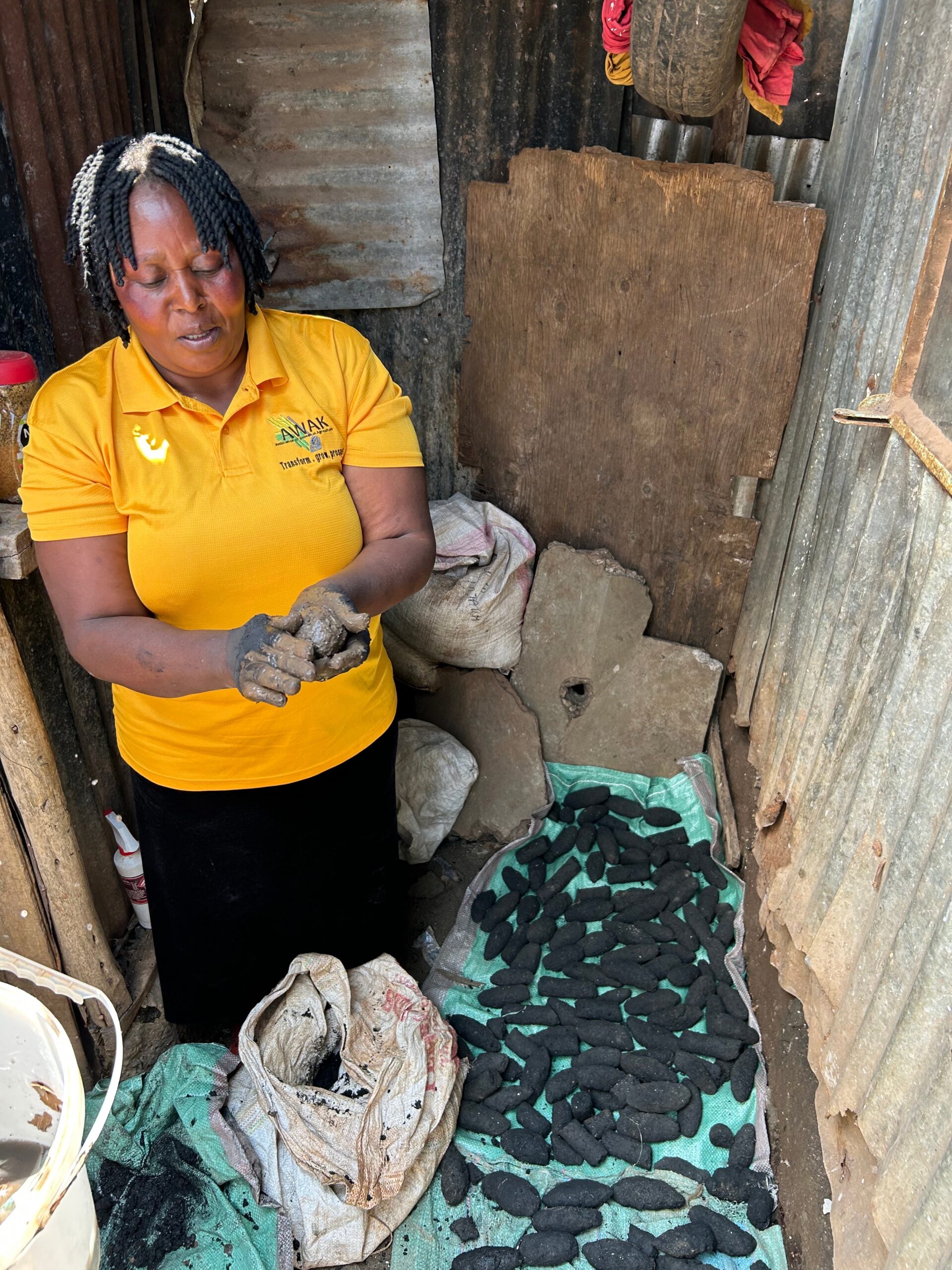
“When there is no food in the house, the man is often angry. It means that gender-based violence can be a big problem in the informal settlements,” says Jen. “But when a woman brings in her own income, she is more respected, and she gets a seat at the negotiating table,” she adds explaining how it helps to empower women across the slums.
Down the road from Jen, Consolata makes charcoal briquettes following AWAK training, which she proudly demonstrates to The Independent outside her house. She mixes maize flour, charcoal dust and water together, before leaving it to bake in the sun. “Before, I was washing clothes for people, but now I am able to make more money, and even put some in the bank,” she says.
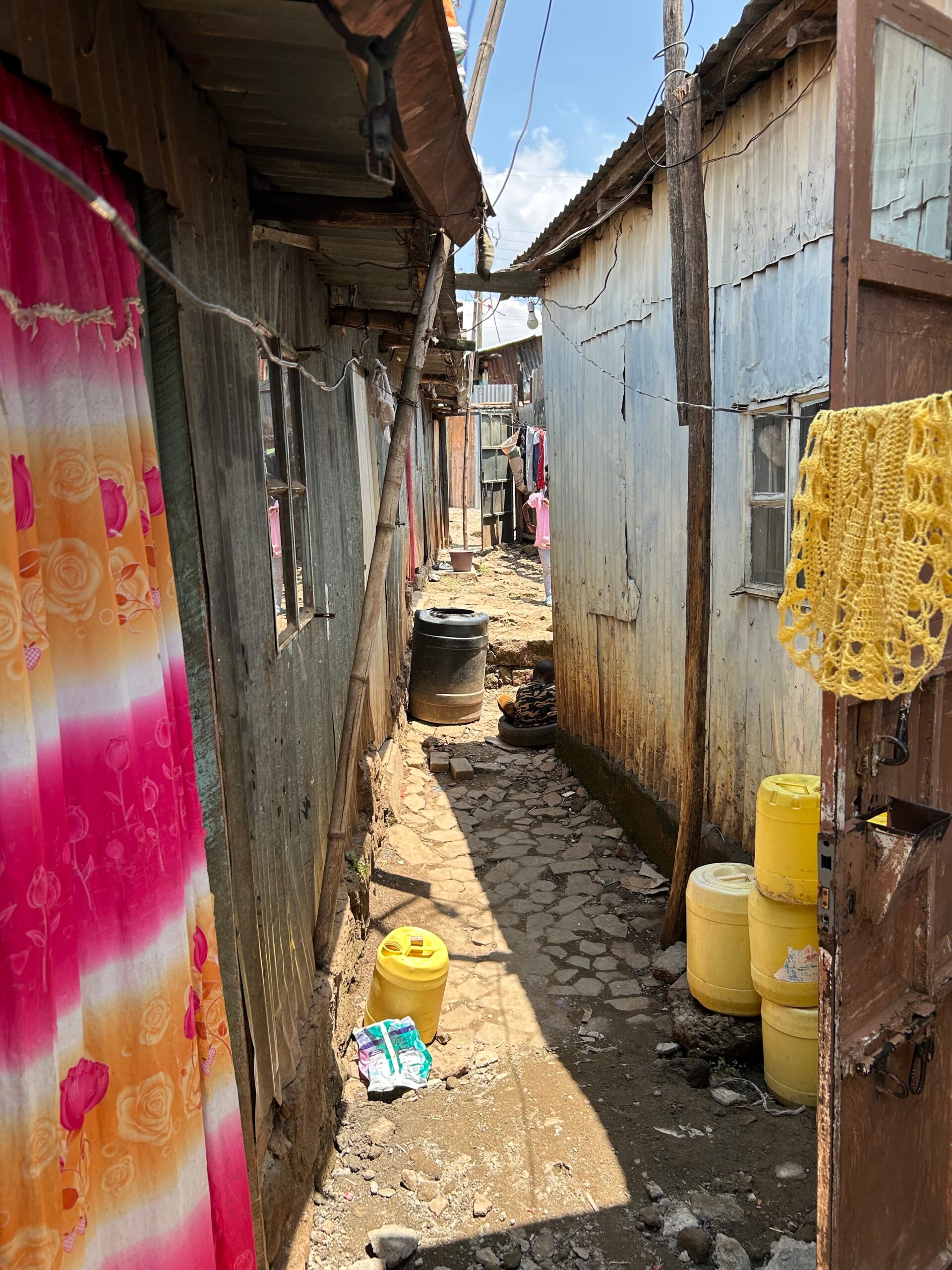
But even among those few whose lot have been improved by AWAK, there is a sense that life in the informal settlements remains extraordinarily challenging.
‘Seeing friends dying was unbearable’
A few kilometers away from Kawangare is another slum called Korogocho, where 38-year-old Lydia and her friend 30-year-old Patrick rent a patch of land behind a corrugated iron fence, where they grow their own vegetables following training from AWAK. Working alongside them on the day The Independent visited were 32-year-old Rosemary and her friend, 34-year-old Ann, who make briquettes.
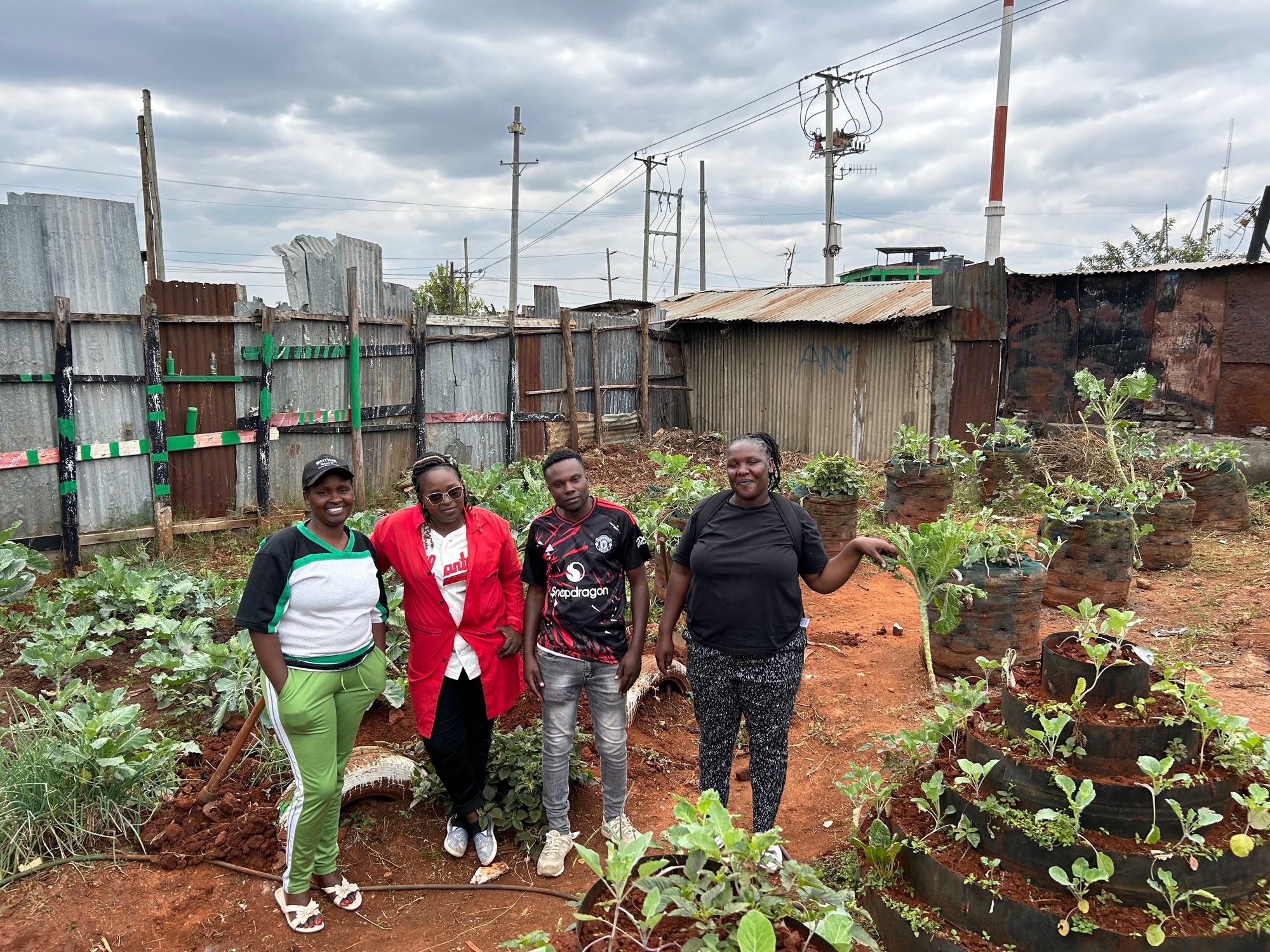
Patrick and Ann used to be full-time criminals, extorting people with knives or fake guns for money. Rosemary, meanwhile, has recently taken on responsibility for her two nephews, in addition to her own two sons, after her brother died from methanol poisoning and her sister-in-law deserted the children. Indeed, all three women are single mothers, and their stories speak to the serious social problems that stalk the streets of the informal settlements, where crime is rampant alongside almost zero law enforcement presence, and schools have very low attendance rates.
When asked why he decided to turn away from a life of crime, Patrick explains that “everyone else in the gang was killed” and he just decided: “I don’t want to do this any more”. Ann agrees: “Seeing so many friends dying was unbearable”, she says.
All are grateful for the opportunity that the small-scale economic activities have provided them to break out of the cycle of chronic poverty, unemployment, and crime, which dominates life in the slums. “What AWAK has done is really amazing… without them I do not know where we would be right now,” says Rosemary.
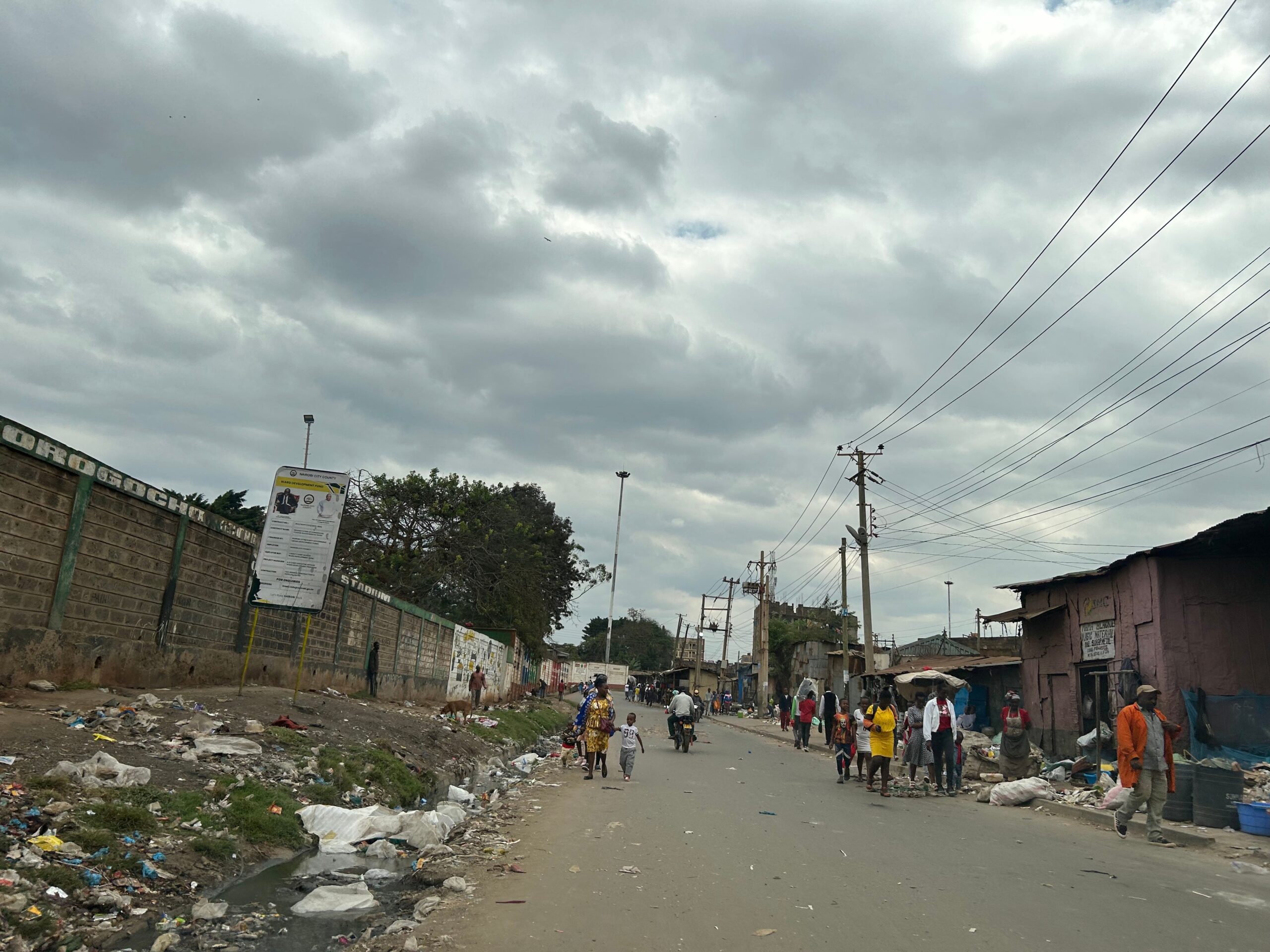
But AWAK’s support can only go so far in meeting the threat posed by climate change, which is amplifying the economic challenges. Lydia previously had another farm supported by AWAK that was lost when the river flooded in 2024, and for which she received no compensation: “I had to start again from nothing,” she says.
With her new patch of land, rent has become a big worry – to the extent that she is unsure how long she can keep it on – as has the ability to be able to store sufficient water to meet the needs of her plants during the dry seasons. “Life is so hard here, really so hard,” she says. “Sometimes I just look at my children and cry.”
Aid cuts making things worse
Lydia has seen the impact of aid cuts on lives in the slums, describing how NGO World Vision used to “give us jobs as caregivers in the community,” and also used to cover some school fees. “Now they are gone, and children go to the dumping site to scavenge”. The vast majority of children in Korogocho are not in regular school, says Lydia, who adds that of her own four children, she can currently only afford for one to be in permanent education.
World Vision was one of the organisations most affected by the closure of the United States Agency for International Development (USAID) by Donald Trump earlier this year. Programmes worth just under $100 million (£75m) terminated early, according to leaked files analysed by The Independent.
Aid cuts are also limiting AWAK’s impact: The NGO used to receive funding from a number of partners including USAID, but now only one funder, Oxfam, remains. “Right now we have a big problem at AWAK: We are really low on funds. Ideally we would have women like Jen to train others, but currently we cannot afford that,” says AWAK’s Julius Mundia.
Back in Kawangare, Jen has also seen the impacts of cuts to HIV services on people in the slums living with HIV. “There is a church around the corner from here, where women used to go who are affected by HIV,” she says. “I have heard of three women who have passed away this year because they no longer received support from NGOs.”
Jen adds, too, that more women have been driven to crime and prostitution in the wake of the economic difficulties that have come from aid cuts. “The funding cuts have affected young mothers, who are no longer able to make a living, so of course crime has gone up. That’s how it is here,” she says.
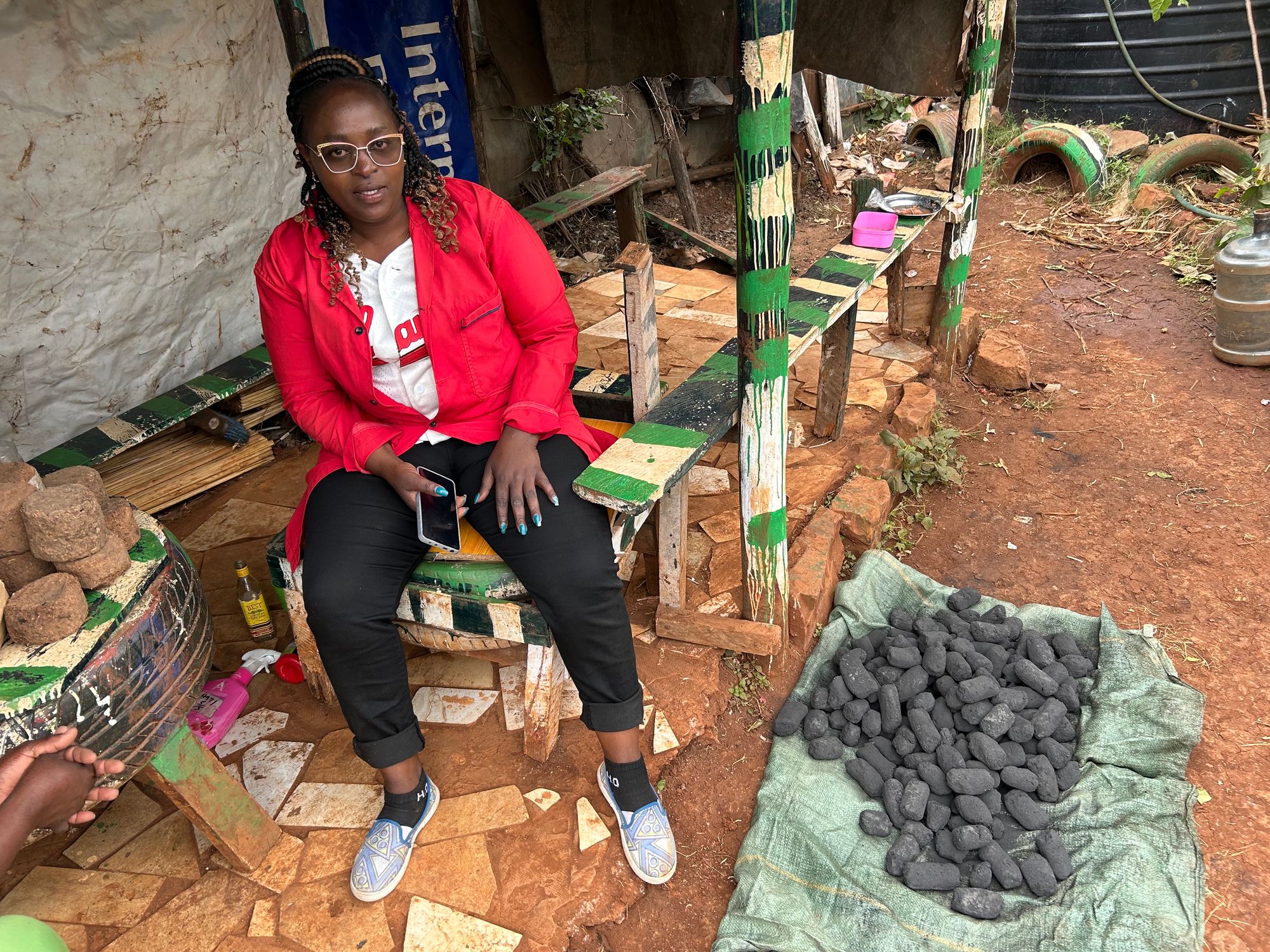
In just a matter of weeks, world leaders are to gather at COP30 in Brazil, with the aim of plotting out a pathway to address the climate crisis. But Joe Muturi, from Slum Dwellers International, has little hope that the urban poor will get much of a look in.
“These climate summits happen in nice exotic locations, which is always a world away from what is actually happening in people’s lives,” he says. “We don’t need fancy solutions manufactured in London or New York, but instead need local solutions that put the community at their heart.”
For this shift to happen – and for programmes such as that run by AWAK to gain greater prominence – there will require a step-change in how climate policy is approached, and a real acknowledgement of the daily crisis felt by so many. For Muturi, this starts with a shift in attitude, with no more euphemisms such as the description of slum-dwellers as ‘resilient’: “Calling slum-dwellers ‘resilient’ is like throwing someone who cannot swim in a swimming pool of sharks, and then congratulating them when they somehow survive,” he says.
For those on the ground, there are few options right now other than to grin and bear it.
“What we all hope one day is that one day a Good Samaritan might come and save us from our lives here,” says Rosemary, from Korogocho. “I am just hoping one day to make it good, and be able to send my boys to school.”
This article was produced as part of The Independent’sRethinking Global Aid project
